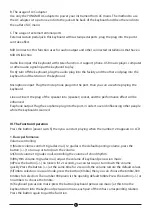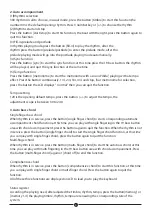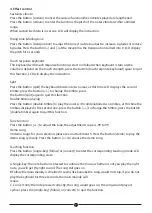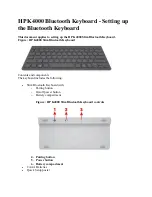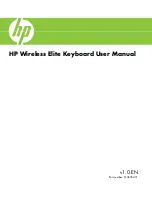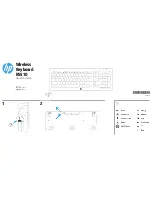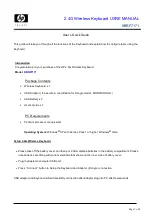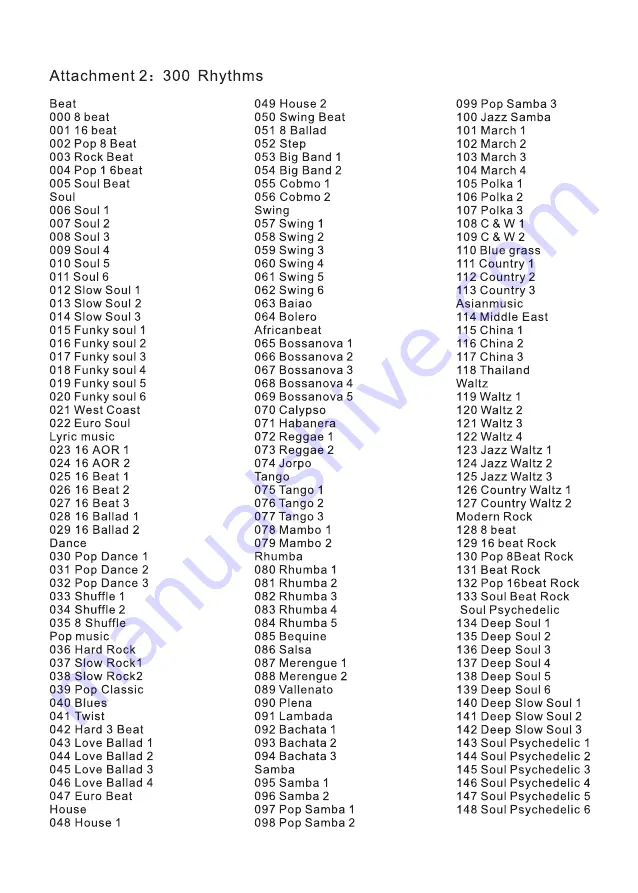
B. O uso do adaptador A/C
Use apenas o adaptador A/C KEY POWER para alimentar seu instrumento da rede elétrica A/C.
O método para usar o adaptador CA é colocar uma extremidade na tomada na parte traseira do
teclado e a outra extremidade na tomada da rede elétrica A/C.
C. O uso de portas de terminais externos
Conector externo do pedal de sustentação: este teclado com portas de pedal de sustentação,
conecte o plugue à porta que pode entrar em vigor.
Conector MIDI: esta função usa para saída de áudio e outras instalações conectadas que com
função MIDI IN.
Entrada de linha de áudio: este teclado com função estéreo, suporta telefone, tocador de música
USB, computador ou outro sinal de áudio que o teclado deve tocar.
Primeiro, desligue o teclado, conecte o plugue de áudio na instalação e a outra extremidade no
teclado e depois ligue o teclado.
Entrada de microfone: conecte o plugue do microfone na porta, do que você pode usar enquanto
toca o teclado.
Saída de linha: insira o plugue do alto-falante no soquete [alto-falante] e o efeito de desempenho
será aprimorado.
Saída do fone de ouvido: conecte o plugue do fone de ouvido na porta, para evitar influenciar
outras pessoas enquanto o teclado é aprendido.
III. A Preparação para tocar
Pressione o botão [botão liga / desliga] e poderá começar a tocar quando o número 120 aparecer
no LCD.
1. Desempenho Básico
Controle de volume
(1) Controle de volume principal: 16 notas no total, 12 notas é o volume de abertura padrão,
pressione o botão [+/-] para aumentar ou diminuir o volume.
(2) Volume do acorde: 10 notas ao todo, controlando o volume do ritmo do acorde.
(3) Volume do ritmo: 10 notas no total, ajuste o volume da música de percussão do teclado.
(4) Pressione o botão [+/-] sem afrouxar por 2 segundos, você pode aumentar ou diminuir o
volume rapidamente.Pressione o botão [+/-] ao mesmo tempo por 2 segundos, o volume restaura-
rá os valores padrão .
(5) Seleção de timbre: no modo usual, pressione o botão [timbre] e, em seguida, você pode
escolher o timbre, 300 timbres para seleção. O piano número 000 é o timbre padrão de abertura.
Pressione o botão [+/-] ou 3 números para escolher o timbre.
(6 music Música de percussão do teclado: pressione o botão [música de percussão do teclado] e,
neste momento, o teclado se transforma na música de percussão do teclado, cada par deles tem
uma relação correspondente.
2 .Auto Acompanhamento
(1) Seleção de ritmos
Ao todo 300 ritmos para escolher, no modo usual, pressione o botão [timbre] para iniciar esta
função, o número 00 é o ritmo de abertura padrão. Pressione a tecla numérica 3 ou [+/-] para
escolher o ritmo.
(2) Os ritmos começam e param
Pressione o botão [start / stop] para iniciar esta função, a batida com a luz, pressione o botão
novamente para sair desta função.
(3) Preenchimento, prelúdio e adiamento
No modo de reprodução de ritmo, pressione o botão [fill-in] para reproduzir o ritmo, após o
ritmo, pressione o botão [prelude / postlude] para entrar no modo prelúdio, depois de
o modo de reprodução prelúdio entrará no modo de reprodução adiado automaticamente.
(4) função de sincronização
Pressione o botão [sync] para iniciar a função de sincronização; nesse momento, pressione o botão
19 graves, o ritmo será reproduzido e saia da função de sincronização ao mesmo tempo.
(5) função Tempo
Pressione o botão [metrônomo] para iniciar o metrônomo com um som "dida", tocando com um
efeito de andamento. Pressione o botão continuamente, 1/4, 2/4, 3/4, 4/4 e pare, quatro metrôno-
mos para seleção , pressione o botão que o LCD exibe "normal" e você pode sair da função.
Configuração de tempo
120 é o tempo padrão de abertura, pressione o botão [+/-] para ajustar o tempo, o
o escopo de ajuste está entre 30 e 240.
3. Acorde de graves automático
Acorde baixo de um dedo
Quando o ritmo estiver em serviço, pressione o botão [acorde com um dedo] para iniciar a função
correspondente de acordes de acompanhamento automático; nesse momento, você pode tocar
com um toque na área de 19 graves com acompanhamento de acordes, pressione o botão
novamente para sair da função. Quando o ritmo não está em serviço. pressione o botão [acorde
com um dedo] para iniciar a função de acorde com um dedo; neste momento você pode tocar
com acorde com um dedo, pressione o botão novamente para sair da função.
Acorde com vários dedos.
Quando o ritmo está em serviço. pressione o botão [acorde de vários dedos] para iniciar o acorde
de graves automáticos; neste momento, você pode tocar com vários dedos na área de 19 graves
com acompanhamento de acordes. Pressione o botão [acorde de vários dedos] novamente ou
[acorde desligado] para finalizar esta função.
Acorde abrangente
Quando o ritmo estiver em serviço, pressione o botão [acorde abrangente] para iniciar esta função.
Nesse momento, você pode tocar com um acorde de dedo único ou com vários dedos. Pressione o
botão novamente para sair da função.
Todas essas três funções são exibidas no LCD para que você toque o teclado.
Registro de status
De acordo com a necessidade de reprodução, após ajustar o timbre, ritmo, andamento, pressione o
botão [memory] ou [memory 1-4] o timbre, ritmo e andamento da reprodução renovando o
estado correspondente do sistema.
4. Controle de efeito
Sustain & vibrato
Pressione o botão [sustain] para entrar na função de sustentação, as notas finais tocadas são
alongadas.
Pressione o botão [vibrato] para entrar na função, o tom das notas vibra dentro de um intervalo
limitado.
Quando o sustain e o vibrato estão em serviço, o LCD exibirá a instrução.
Tom crescente e tom decrescente
Pressione o botão [transposição] para ajustar o tom, é possível ajustar para aumentar 6 notas ou
reduzir 6 notas. Pressione o botão [+] e [-] enquanto isso, a transposição se transforma em 0, o LCD
exibe a afinação por 3 segundos.
Teclado de resposta ao toque
Este teclado com função de resposta ao toque é iniciado por padrão quando o teclado é ligado, o
volume depende da força do toque, pressione o botão [teclado de resposta ao toque] novamente
para sair desta função, o LCD exibirá as instruções.
Dividido
Pressione o botão [dividir], o teclado se divide em duas áreas; nesse momento, o LCD exibe o
segundo timbre, pressione o botão [+/-] para alterar o timbre, pressione
o botão [dividir] novamente para sair desta função.
Timbre duplo
Pressione o botão [timbre duplo] para tocar as notas com dois timbres combinacionais; neste
momento os timbres exibidos são o segundo, pressione o botão [+/-] para alterar o timbre,
pressione o botão [timbre duplo] novamente para sair esta função.
Função de sintonia
Pressione o botão [+/-] para ajustar a melodia, o alcance do ajuste é de -99 a 99.
Música demo
30 músicas demo para sua seleção, veja no anexo 3. Pressione o botão [demo] para reproduzir a
música demo ciclicamente. Pressione o botão [+/-] para escolher a música demo.
Função de ensino
Pressione o botão [tecla única] [seguir] ou [concerto] para entrar no modo de ensino correspon-
dente; o display LCD exibe o estado correspondente.
A. Tecla única: o botão de nota é pressionado para continuar a música, se você tocar ou não a nota
certa, obterá o som certo. A música ainda continua.
B.Siga: a melodia principal é protegida, parece um karaokê, a música não para, se você não tocar o
B. The usage of A/C adapter
Use only the YONGMEI AC adapter to power your instrument from AC mains. The method to use
the AC adapter is to put one end into the jack at the back of the keyboard and the other end into
the outlet of AC mains.
C. The usage of external terminal ports
External sustain pedal jack: this keyboard with sustain pedal ports, plug the plug into the port it
can take effect.
MIDI connector: this function uses for audio output and other connected installations that have a
MIDI IN function.
Audio line input: this keyboard with stereo function, it support phone, USB music player, computer
or other audio signal input the keyboard to play.
Firstly turn off the keyboard, plug the audio plug into the facility and the other end plug into the
keyboard and then turn on the keyboard.
Microphone input: Plug the microphone plug into the port, than you can use while playing the
keyboard.
Line out:Insert the plug of the speaker into [speaker] socket, and the performance effect will be
enhanced.
Earphone output:Plug the earphone plug into the port, in order to avoid influencing other people
while the keyboard is learned.
III. The Function Operation
Press the button [power switch] then you can start playing when the number 120 appears on LCD.
1. Basic performance
Volume controlling
(1)Master volume control:16 grades in all, 12 grades is the default opening volume, press the
button [+/-] to turn up or turn down the volume.
(2)Chord volume:10 grades in all,controlling the volume of chord rhythm.
(3)Rhythm volume:10 grades in all, adjust the volume of keyboard percussion music.
(4)Press the button [+/-] no loosen for 2 seconds, you can turn up or turn down the volume
quickly.Press the button [+/-] at the same time for 2 seconds,the volume restore the default values.
(5)Timbre selection: in usual mode, press the button [timbre] then you can choose the timbre,300
timbres for selection. The number 000 piano is the opening default timbre.Press the button [+/-] or
3 numbers to choose the timbre.
(6
)
Keyboard percussion music:press the button [keyboard percussion music] at this time the
keyboard turn into the keyboard percussion music,each pair of them has corresponding relation.
Press the button again to quit the function.
2. Auto accompaniment
(1)Rhythms selection
300 rhythms in all to choose, in usual mode, press the button [timbre] to start this function,the
number 00 is the default opening rhythm. Press 3 number key or [+/-] to choose the rhythm.
(2) Rhythms start and stop
Press the button [start/stop] to start this function, the beat with the light, press the button again to
quit this function.
(3) Fill-in,prelude and postlude
In rhythm playing mode,press the button [fill-in] to play the rhythm , after the
rhythm press the button [prelude/postlude] to enter the prelude mode, after tho
prelude playing mode will go into the postlude playing mode automatically.
(4) Sync function
Press the button [sync] to start the sync function, at this time press the 19 bass button, the rhythm
will be played, and quit the sync function at the same time.
(5) Tempo function
Press the button [metronome] to start the metronome with a sound “dida", playing with a tempo
effect. Press the button continuously, 1/4, 2/4, 3/4, 4/4 and stop, four metronome for selection,
press the button the LCD displays " normal" then you can quit the function.
Tempo setting
120 is the opening default tempo, press the button [+/-] to adjust the tempo, the
adjustment scope is between 30 to 240.
3. Auto bass chord
Single finger bass chord
When rhythm is in service, press the button [single finger chord] to start corresponding automatic
accompaniment chord function,at this time you can play with single fingering in the 19 bass button
area with chord accompaniment, press the button again to quit the function. When the rhythm is not
in service. press the button [single finger chord] to start the single finger chord function, at this time
you can play with single finger chord, press the button again to quit the function.
Multi-finger chord
When rhythm is in service. press the button [multi- finger chord] to start the auto bass chord, at this
time you can play with multi fingering in the 19 bass button area with chord accompaniment, Press
the button [multi-finger chord] again or [chord off] to end this function.
Comprehensive chord
When rhythm is in service, press the button [comprehensive chord] to start this function, at this time
you can play with single finger chord or multi-finger chord. Press the button again to quit the
function.
All of these three functions are displayed on LCD to lead you to play the keyboard.
Status register
According the playing need, after adjusted the timbre, rhythm, tempo, press the button[memory] or
[memory 1-4] the playing timbre, rhythm, tempo are renewing the corresponding state of the
system.
4. Effect control
Sustain & vibrato
Press the button [sustain] to enter the sustain function,the endnotes played are lengthened.
Press the button [vibrato] to enter the function, the pitch of the notes vibrates within a limited
range.
When sustain & vibrato is in service LCD will display the instruction.
Rising tone & falling tone
Press the button [transposition] to adjust the tone,it is able to adjust to increase 6 grades or reduce
6 grades. Press the button [+] and [-] at the meantime, the transposition turned into 0, LCD display
the pitch for 3 seconds.
Touch response keyboard
This keyboard with touch response function,is start on default when keyboard is turn on,the
volume is depend on the touch strength, press the button [touch response keyboard] again to quit
this function, LCD will display the instruction.
Split
Press the button [split] the keyboard divide into two areas, at this time LCD displays the second
timbre, press the button [+/-] to change the timbre, press
the button [split] again to quit this function.
Double timbre playing
Press the button [double timbre] to play the notes with combinational two timbres, at this time the
timbres displayed is the second one, press the button [+/-] to change the timbre, press the button
[double timbre] again to quit this function.
Tune function
Press the button [+/-] to adjust the tune, the adjustment scope is -99 to 99.
Demo song
30 demo songs for your selection, please see in attachment 3. Press the button [demo] to play the
demo song cyclically. Press the button [+/-] to choose the demo song.
Teaching function
Press the button [single-key] [follow] or [concert] to enter the corresponding teaching mode,LCD
display the corresponding state.
A.Single-key: the note button is pressed to continue the music, whether or not you play the right
note, you will get the right sound. The song still goes on.
B.Follow:the main melody is shielded it seems like karaoke,the song would not stop, if you do not
play the keyboard for three seconds, the main melody will
renew.
C. Concert:only the note pressed correctly, the song would goes on, the song would played
cyclical, press the [single-key] [follow] or [concert] to quit the function.
Recording
Press the button [record] to go into the function, the notes recorded about 110 notes, the notes
playing will be recorded. Neither fingering nor percussion would be recorded. New notes can be
added till the room is full.When recording is under way. press [playback] to play the recorded notes
one by one, LCD display the corresponding state ,when the room is full the LCD will display “full"
for 4 second , press the [record] button again to quit the function.
Rhythm programming
Press the button [program] to go into the programming mode and the corresponding mode
display on LCD.In the programming mode to edit drums into the keyboard, only one drum can be
edit at a time and drums edited should not exceed the maximum number 32. press a key once to
edit an empty beat more than 32 notes LCD will display “full" for 3 second.In programming mode.
press [program] to end this function and get into normal function, at this time corresponding
mode display on LCD.
In programming mode,press [playback] to play the drums edited cyclically, forming a rhythm of
self- edited style,corresponding state displayed on LCD. In this mode you can choose different
timbre to play.
5. With USB music player
Volume [+] and [-]:the volume button is pressed to increase the volume or reduce the volume.
Prev.music/ next .music: the prev button or next button is pressed to select prev music or next
music, the pressing on the two buttons are fast-back or fast-forward.
EQ mode:EQ button is pressed every time, the normal mode, jazz mode, classical mode,popular
mode and rock and roll mode is changed in turn.
Playing mode: the button is pressed for the first time, and the music in the file is played; the button
is pressed for the second time, and the mode is change into the single-cycle mode.The button is
pressed for the third time, and the mode is change into the random playing mode.
Playing:the U disk is learned before the power is on. The playing button is pressed to play the
music. It only support MP3 sound format.









